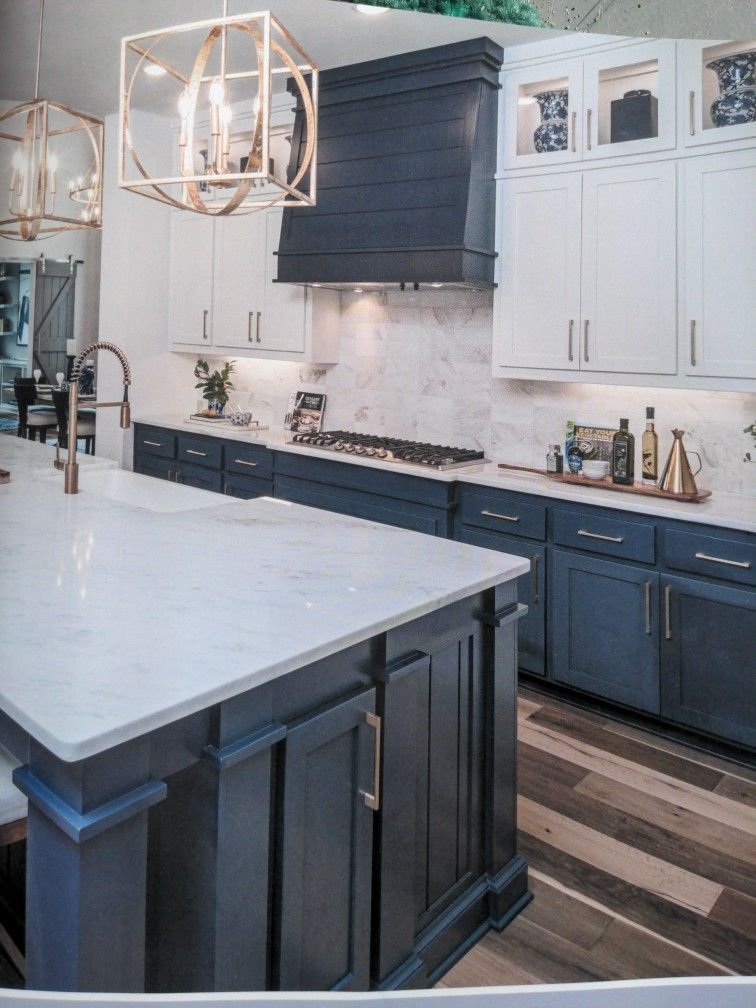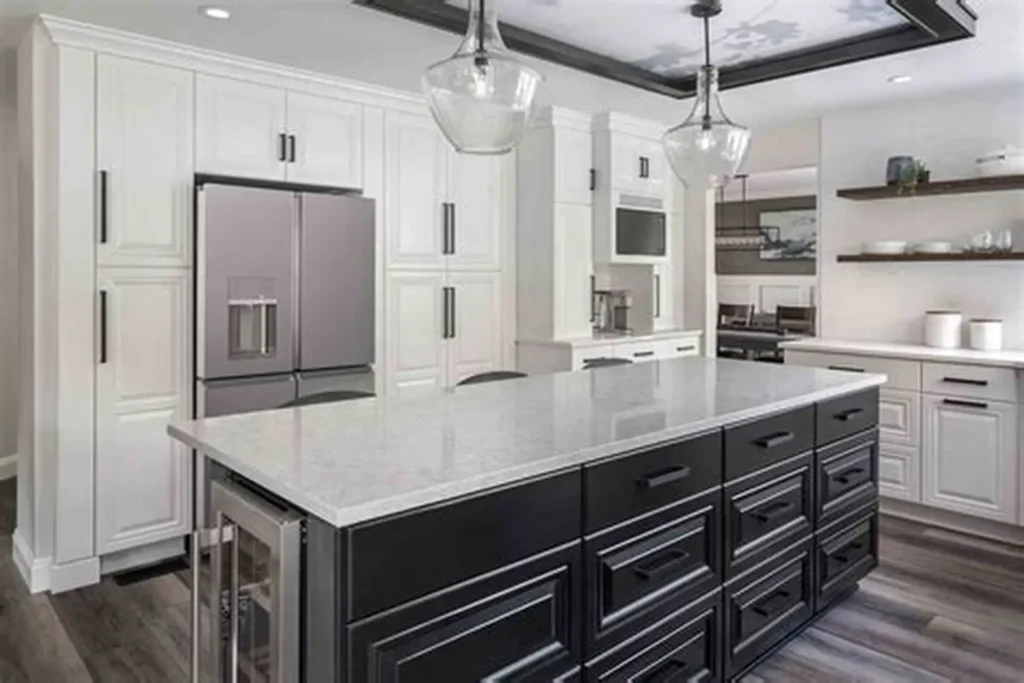While vinegar is a popular “natural” cleaner, its acidic pH can dull polished finishes, weaken sealers, and leave a cloudy film on your granite stone. This guide explains why vinegar is risky, and what to use instead for spotless, long-lasting countertops—whether you own a dramatic black granite countertop, a crisp white granite countertop, or anything in between.

Why Vinegar and Granite Don’t Mix
Granite geology & composition (the science in plain English)
Granite is a natural (not engineered) igneous rock made primarily of quartz, feldspar, and mica. Even when sealed, granite remains microporous. A modern penetrating sealer fills many of those pores to resist oils, wine, and sauces—but harsh acids and alkalines can degrade that protective barrier.
How vinegar damages granite
- Etching & dulling: Acids (like vinegar or lemon juice) can react at the surface, flattening micro-polish and creating a subtle haze.
- Sealer breakdown: Acidic solutions shorten the lifespan of sealers, making stains more likely.
- Residue & streaks: Vinegar often leaves a filmy look, especially noticeable on black granite countertops under bright light.
Bottom line: Vinegar is not stone-safe. Reserve it for glass, stainless steel, and ceramic—not granite countertops.

What to Use to Clean Granite Countertops (Stone-Safe Options)
If you want the “just-installed” look to last, switch to pH-neutral, non-abrasive options:
- Daily cleaning: pH-neutral stone cleaner or warm water with 1–2 drops of dye-free dish soap.
- Tools: Soft microfiber cloths; a non-scratch sponge for sticky spots.
- Disinfection (occasional): Light mist of 70% isopropyl alcohol, 2–3 minute dwell, rinse with clean water, then buff dry.
- Weekly “reset” for dark tops: After cleaning, wipe with distilled water and buff dry to prevent mineral spotting.
For a concise checklist and product guidance, see what to use to clean granite countertops.
Step-by-Step: The Perfect Granite Cleaning Routine
1) Dry dust first
Wipe crumbs with a dry microfiber to avoid swirl marks.
2) Light mist of cleaner
Use a pH-neutral stone cleaner or warm water + a drop of mild dish soap. (More soap = more residue.)
3) Wipe in overlapping passes
Work from backsplash toward the counter edge. Flip the cloth as it loads up.
4) Optional distilled-water rinse
Great for black granite and dark, honed finishes to eliminate tap-water minerals.
5) Buff dry
This 10-second step is the secret to a brilliant, streak-free finish.
Advanced Care: Hard Water, Sticky Grease & Stains
Hard-water spots (around faucets)
- Do not use vinegar.
- Soften deposits with warm distilled water compresses.
- Gently agitate with a soft nylon brush and stone-safe cleaner; rinse and buff dry.
- For persistent buildup, choose a stone-safe limescale remover formulated for natural stone.
Grease splatters (cooktop zones)
- Spray stone cleaner, wait 1–2 minutes, wipe.
- For stubborn films, mix a baking soda + water paste, apply briefly, wipe, rinse, and dry.
Oil & organic stains (olive oil, coffee, wine)
- Pull stains from pores with a poultice:
- Oil stains: baking soda + water (peanut-butter thickness).
- Organic stains: baking soda + 3% hydrogen peroxide.
- Spread ⅛–¼″ thick, cover with plastic, poke pinholes, wait 24–48 hours, remove, rinse, repeat if needed.
Tip: Always spot-test in an inconspicuous area first—especially on honed or leathered finishes.
Sealing Granite: The Other Half of “Clean”
Do granite countertops need sealer?
Most do—sealer adds stain resistance; it doesn’t make stone stain-proof. Lighter or honed stones generally need more frequent sealing.
The water-drop test
- Place a teaspoon of water on the surface.
- Darkens in 5–10 minutes? Time to reseal.
- Beads for 30+ minutes? You’re protected for now.
How often to reseal
Typically 1–3 years depending on usage, color, finish, and product quality.
Application basics
Clean → let dry → apply sealer per label → wipe off all excess → allow full cure time before heavy use.
Granite vs. Quartz: Why Cleaning Rules Differ
- Granite (natural stone): pH-neutral cleaners, periodic sealing, excellent heat tolerance (still use trivets).
- Quartz (engineered stone): Usually no sealing, similar daily cleaning, but avoid high heat—resins can discolor.
This context matters if you’re comparing granite vs quartz countertops for a remodel. Granite offers refinishability and distinct natural movement; quartz offers uniform patterns and minimal maintenance. For durability, both are strong, but daily stone-safe routines keep either surface pristine.
Frequently Asked Questions
“Can I ever use vinegar on granite?”
No. Even diluted, vinegar is acidic and can dull the finish or degrade sealer—especially visible on black granite. Keep it off your counters.
“Are ‘natural’ cleaners okay?”
“Natural” doesn’t equal stone-safe. Citrus and vinegar are natural but too acidic. Always choose neutral pH.
“My granite looks cloudy—did vinegar cause it?”
Possibly. Cloudiness often comes from acid exposure or soap/mineral film. First, switch to pH-neutral cleaner, add a distilled-water rinse, and buff dry. If dullness remains, consult a stone pro for re-honing or repolishing.
“Do disinfecting wipes damage granite?”
Many contain ammonia or acids. Use only stone-safe versions, and rinse/buff to avoid film.
“Can I stand on granite to reach a cabinet?”
It’s tempting, but seams and cantilevers are weak points. Learn more: Can you stand on granite countertops?
What to Avoid on Granite (Common Kitchen Missteps)
- Acids & citrus: vinegar, lemon, lime, generic descalers.
- High-alkaline or bleach cleaners: can strip sealer and streak the surface.
- Abrasives: scouring powders, steel wool, magic erasers (micro-scratches).
- Glass cleaner: often ammonia-based; leaves a film.
- Steam cleaners: can force moisture into pores and weaken sealer.
Finish-Specific Notes (Polished, Honed, Leathered)
- Polished granite: Most forgiving; focus on buffing dry for mirror clarity.
- Honed granite: Shows oils and fingerprints; clean gently and reseal a bit more often.
- Leathered/antiqued granite: Use a soft nylon brush with cleaner to lift grime from micro-valleys; rinse thoroughly and buff.
Design & Aesthetics: Keeping Granite Picture-Perfect
Whether you chose white granite countertop styles with subtle veining or deep, inky black granite countertops with high polish, routine stone-safe care preserves contrast, prevents stains on light colors, and avoids the milky haze sometimes seen on dark, polished slabs. That means easier pairing granite with cabinet colors, a richer look behind granite backsplash designs, and higher resale appeal—no unnecessary polishing calls or re-sealing emergencies.
Planning a Remodel? Handle Granite Safely
For moving slabs during fabrication or renovation, pros rely on purpose-built equipment to avoid chips, cracks, and seam stress. Explore industrial solutions at Toolrange and see the Aardwolf Forklift Boom FB1-2720 that helps crews lift, stage, and set heavy stone safely. Proper handling prevents damage that no cleaner can fix.
Quick Granite Care Cheat Sheet
- Never use vinegar (or any acidic cleaner) on granite.
- Choose pH-neutral stone cleaner or warm water + one drop of mild, dye-free dish soap.
- Rinse with distilled water on dark tops to avoid mineral spots.
- Buff dry with microfiber—every time.
- Treat stains with a baking-soda poultice (oil = water paste; organic = 3% peroxide paste).
- Perform the water-drop test and reseal every 1–3 years.
- Skip abrasives, ammonia/bleach, glass cleaner, and steam.
Related Resources
- Professional guide: what to use to clean granite countertops
- Safety note: Can you stand on granite countertops?
- Stone handling & jobsite gear: Toolrange
- Pro lifting solution: Aardwolf Forklift Boom FB1-2720

